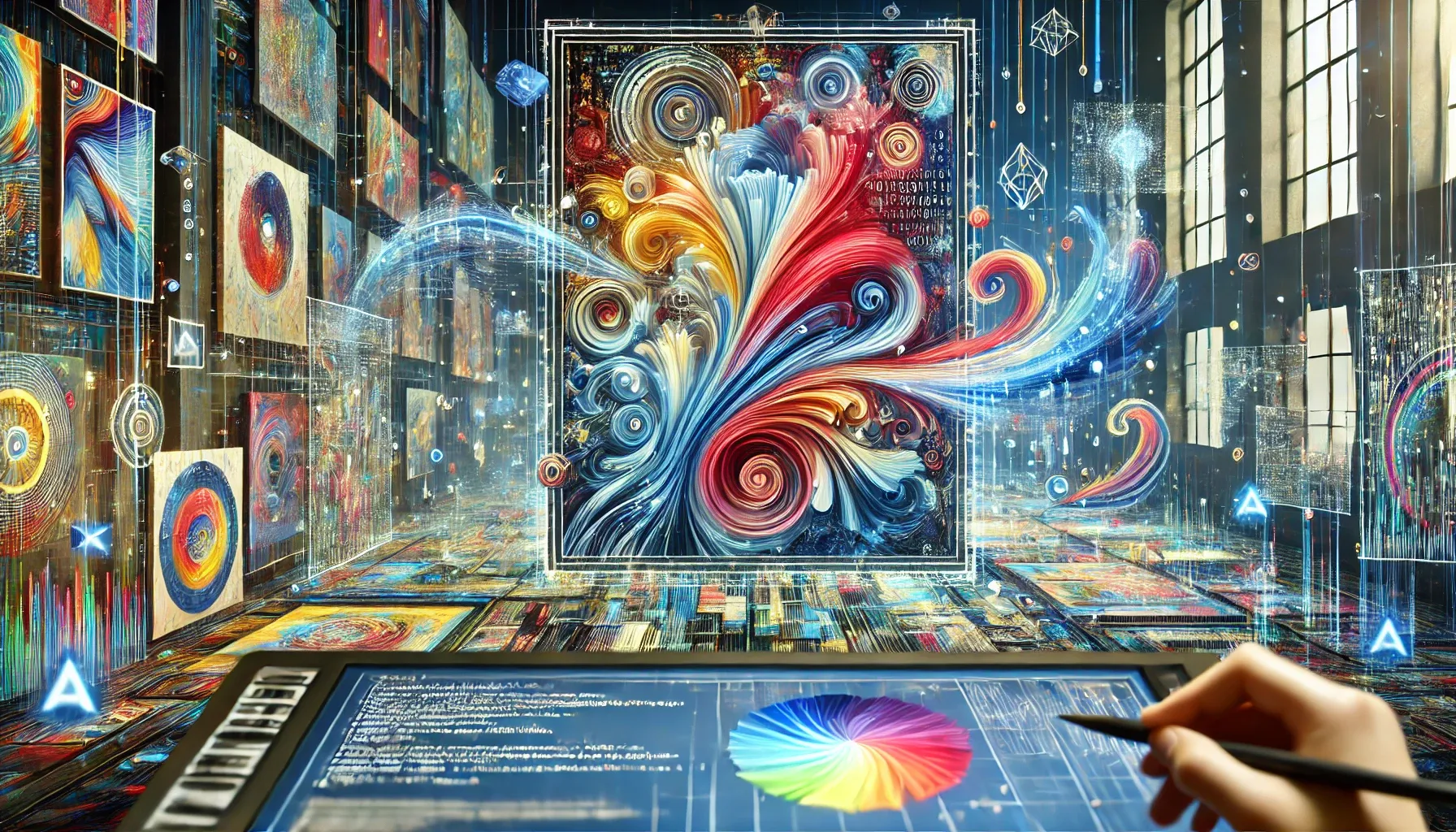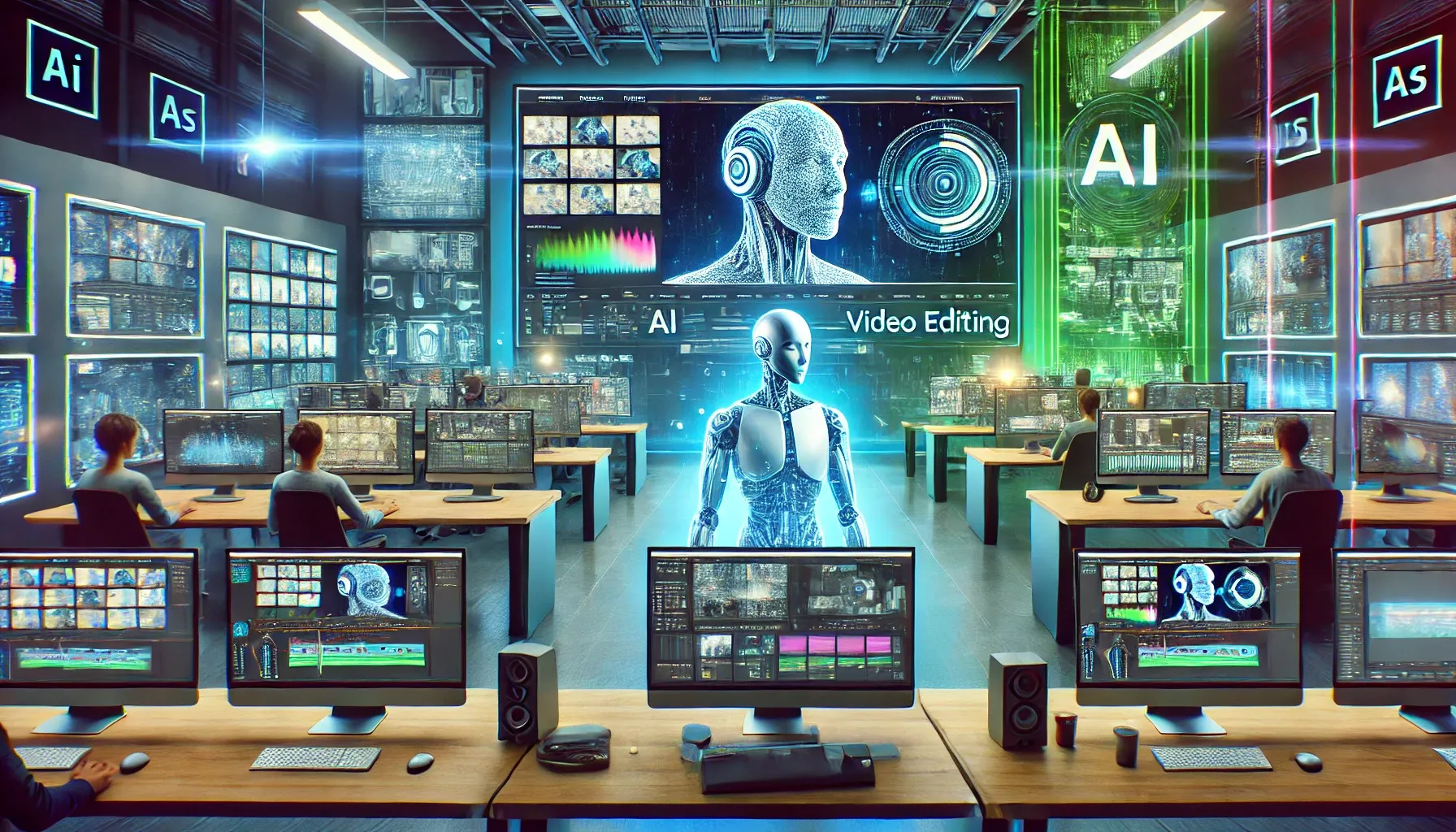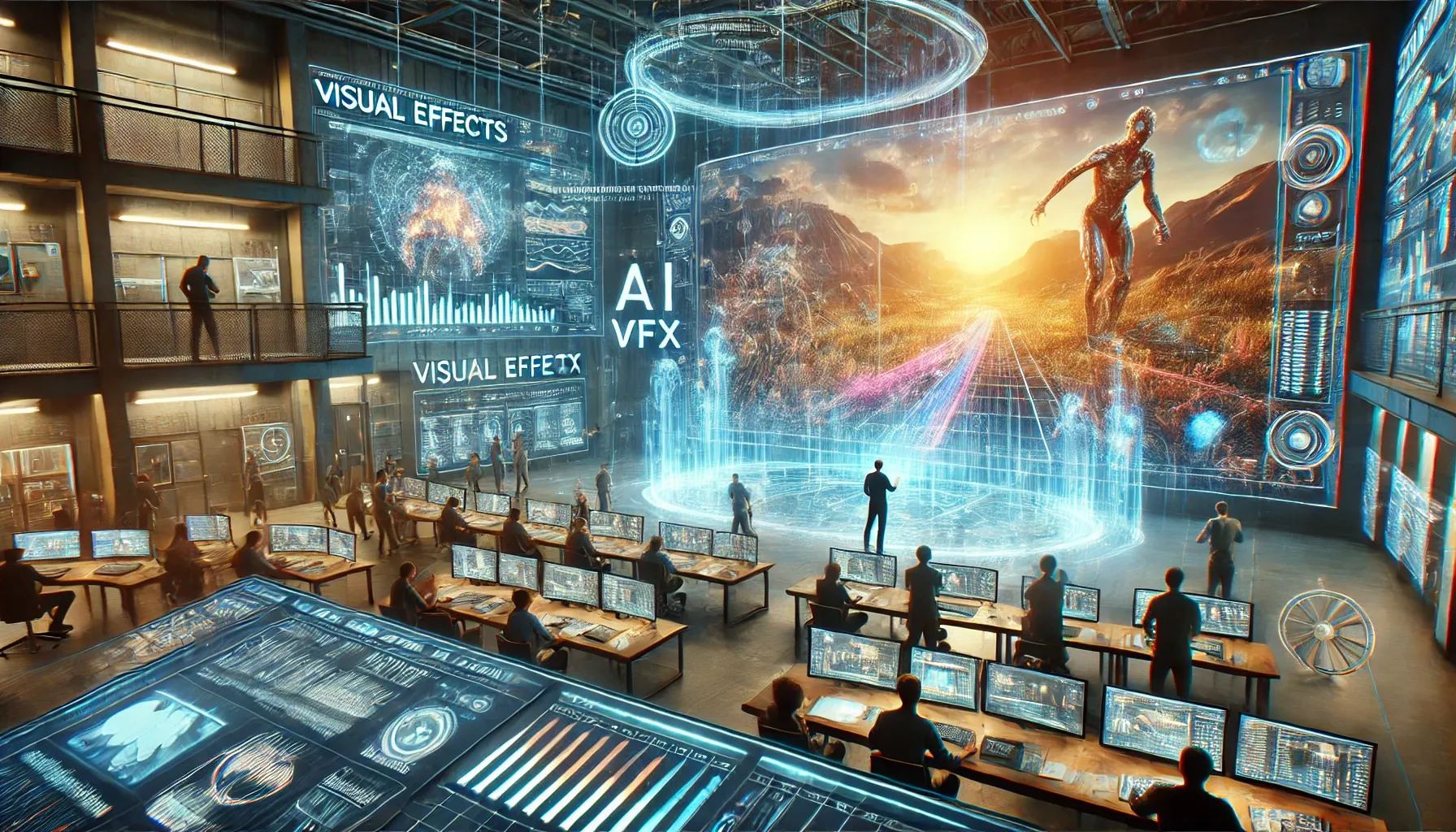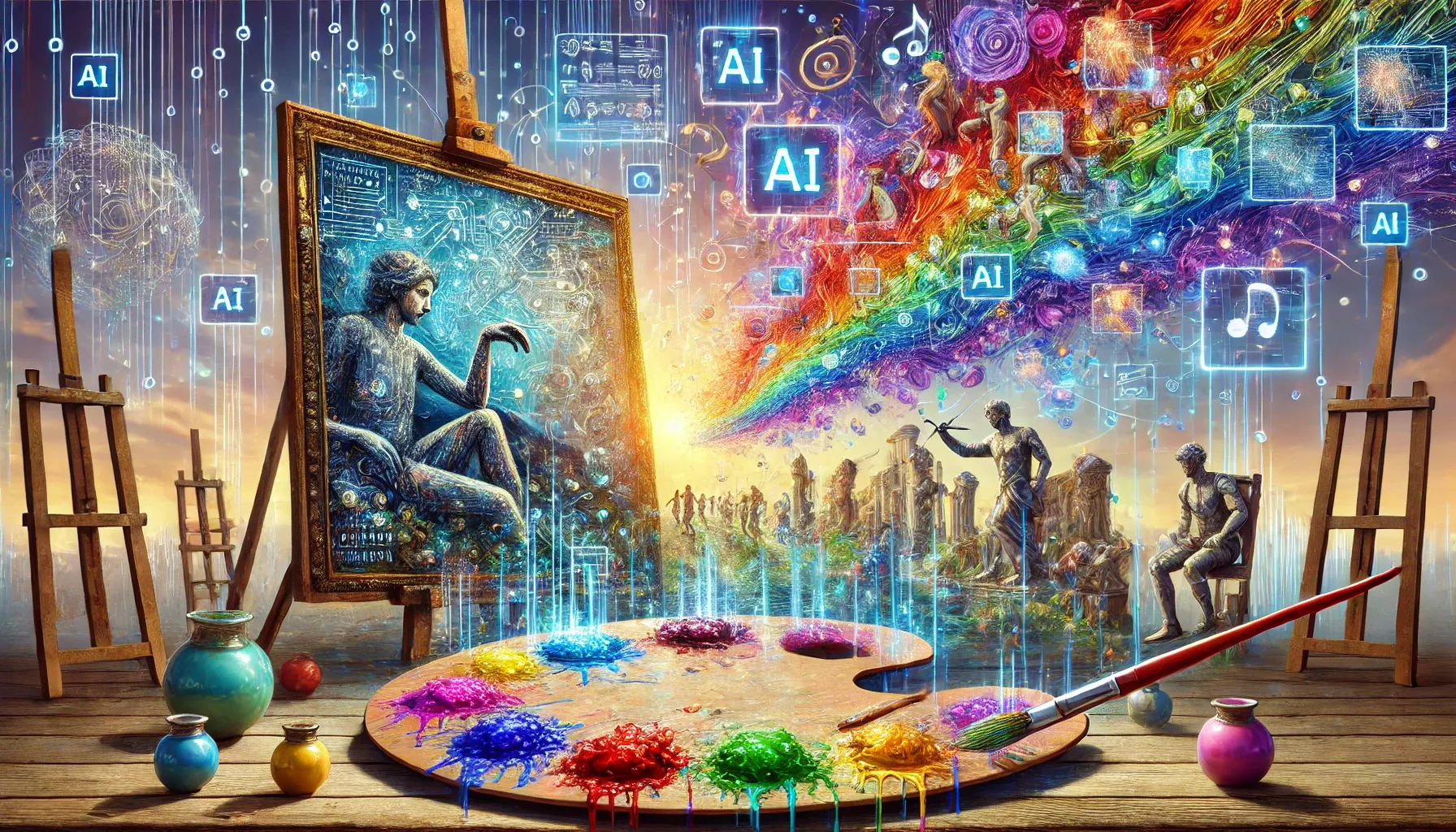Redefining Creativity and Artistic Expression
Artificial Intelligence (AI) is making significant inroads into the world of creative arts, challenging traditional notions of creativity and artistic expression. From generating artwork to composing music, AI is opening up new possibilities and transforming how we understand and engage with art. This blog explores the impact of AI on creative arts, discussing its applications, benefits, challenges, and future directions, supported by recent statistics and expert insights.
🖼️ AI in Visual Arts: From Paintbrush to Algorithm
AI's influence on visual arts has been profound, enabling the creation of artwork through algorithms that mimic or even surpass human creativity. AI-powered tools are helping artists to push the boundaries of what is possible in visual expression.
Generative Art
Generative art involves using AI algorithms to create images, patterns, or designs that are often complex and aesthetically striking. These algorithms can be programmed to follow certain rules or to generate art that is entirely random, resulting in unique and innovative works. AI tools like DeepArt and DALL-E have gained popularity for their ability to generate art based on user input, combining styles and elements in ways that humans might not have considered.
According to a 2024 report by Artnet, the market for AI-generated art has seen a 30% increase in value over the past year, reflecting growing interest from collectors and institutions.

Style Transfer
Style transfer is a technique in which AI is used to apply the style of one image to another, effectively blending different artistic styles. This technology allows artists to experiment with their work by combining various influences, creating pieces that are both familiar and novel. For instance, the app Prisma uses AI to transform photos into artwork reminiscent of famous painters like Van Gogh or Picasso.
A 2023 study by Adobe found that 45% of digital artists are now using AI-powered tools like style transfer to enhance their creative process, with many reporting increased productivity and creativity.
🎵 AI in Music Composition: Harmonizing Technology and Creativity
AI is also making waves in the music industry, where it is being used to compose music, analyze songs, and even collaborate with human musicians. The integration of AI into music production is changing how music is created and consumed.
AI-Composed Music
AI has the ability to compose original music by analyzing vast amounts of existing compositions and learning the rules and patterns that define different genres. Platforms like AIVA (Artificial Intelligence Virtual Artist) are capable of composing music that spans various genres, from classical to electronic, and have even been used to create soundtracks for films and video games.
A report by MIDiA Research in 2024 estimated that AI-composed music will account for 20% of the global music market by 2030, driven by its use in commercial applications and personalized music experiences.

Music Recommendation Systems
AI-driven music recommendation systems have become integral to streaming platforms like Spotify and Apple Music. These systems use machine learning algorithms to analyze user preferences and recommend songs and artists that align with their tastes. The personalization offered by these systems has transformed how listeners discover new music.
According to a 2023 report by Statista, AI-driven music recommendation systems have contributed to a 15% increase in user engagement on streaming platforms, highlighting their importance in the modern music industry.

📚 AI in Literature and Writing: Augmenting the Written Word
AI is also being used to create, edit, and enhance literary works, from novels to news articles. The use of AI in writing is raising questions about authorship and creativity, but it is also opening up new possibilities for writers and publishers.
AI-Generated Content
AI-generated content has become increasingly common, with AI systems like OpenAI’s GPT models being used to write articles, stories, and even poetry. These systems can generate coherent and contextually appropriate text based on prompts provided by users, making them valuable tools for content creators and marketers.
A 2023 survey by Gartner predicted that by 2025, 30% of news content will be written by AI, reflecting the growing reliance on AI-generated text in the media industry.
AI-Powered Writing Assistants
AI-powered writing assistants like Grammarly and Hemingway are helping writers improve their work by providing real-time feedback on grammar, style, and readability. These tools use natural language processing (NLP) algorithms to analyze text and suggest improvements, making them indispensable for writers looking to enhance the quality of their work.
According to a 2024 report by McKinsey & Company, AI-powered writing assistants have increased productivity by 25% among professional writers and have significantly improved the quality of written content.
🎥 AI in Film and Video Production: Transforming Storytelling
AI is revolutionizing film and video production by streamlining processes, enhancing visual effects, and even assisting in the creative decision-making process. The integration of AI in filmmaking is changing how stories are told and experienced.
Automated Video Editing
AI-driven video editing tools are making it easier for filmmakers and content creators to edit footage quickly and efficiently. These tools use machine learning to analyze video content, identify key scenes, and automatically assemble them into a coherent narrative. Platforms like Magisto and Adobe Premiere Pro’s AI features are leading the way in automated video editing.
A 2023 report by PwC estimated that AI-driven video editing tools could reduce production costs by up to 20% by 2025, making professional-grade video production more accessible to independent filmmakers and small studios.

AI in Visual Effects (VFX)
AI is also being used to create realistic visual effects (VFX) that enhance the storytelling experience. AI algorithms can generate lifelike CGI characters, simulate natural phenomena, and even de-age actors in real-time. These capabilities have been used in blockbuster films like The Irishman and Avengers: Endgame to create effects that would have been impossible or prohibitively expensive using traditional methods.
According to Screen Daily, the use of AI in VFX is expected to increase by 40% over the next five years, as filmmakers seek to create more immersive and visually stunning experiences.

🛠️ AI in Game Design: Crafting Intelligent and Adaptive Gameplay
The video game industry has been quick to adopt AI technologies, using them to create more realistic, challenging, and immersive gaming experiences. From AI-driven characters to procedurally generated worlds, AI is changing how games are designed and played.
AI-Driven Game Characters
AI is used to create non-playable characters (NPCs) that can learn, adapt, and respond to player actions in real-time. This makes games more dynamic and engaging, as NPCs can offer unique challenges and experiences each time the game is played. Games like The Last of Us Part II and Red Dead Redemption 2 are known for their advanced AI-driven characters that react intelligently to the player’s decisions.
A 2023 report by Newzoo predicted that by 2026, AI-driven characters will be a standard feature in AAA games, with 60% of new games incorporating some form of AI-driven character behavior.
Procedural Content Generation
Procedural content generation (PCG) involves using AI algorithms to create game environments, levels, and assets on the fly. This allows for infinite variations in gameplay, as no two playthroughs are exactly alike. Games like No Man’s Sky and Minecraft use PCG to generate vast, explorable worlds that keep players engaged for hundreds of hours.
According to a 2024 study by Accenture, procedural content generation is expected to drive a 25% increase in game development efficiency, allowing developers to create richer and more expansive gaming experiences with fewer resources.

🌐 Challenges and Ethical Considerations in AI-Driven Creative Arts
While AI is opening up new possibilities in the creative arts, it also raises significant challenges and ethical questions that must be addressed to ensure its responsible use.
Authorship and Ownership
One of the most pressing issues in AI-driven creative arts is the question of authorship and ownership. When an AI creates a piece of art, music, or literature, who owns the rights to that work? This issue has sparked debates in the legal and artistic communities, with no clear consensus emerging.
A 2024 report by the World Intellectual Property Organization (WIPO) highlights the need for new intellectual property frameworks that address the complexities of AI-generated works, noting that existing laws may not adequately protect the rights of human creators.
Bias and Representation
AI systems are trained on data that may contain biases, and these biases can be reflected in the content they produce. For example, AI-generated art or writing may inadvertently perpetuate stereotypes or exclude certain groups. Ens
uring that AI tools are trained on diverse and representative datasets is essential to promoting inclusivity in the creative arts.
According to a 2023 study by AI Now Institute, 65% of AI-generated content exhibited some form of bias, underscoring the importance of addressing bias in AI training data and algorithms.
Impact on Human Creativity
There is ongoing debate about whether AI enhances or diminishes human creativity. While AI can assist artists, musicians, and writers by automating certain tasks and providing inspiration, there is concern that over-reliance on AI could lead to a decline in human creativity and originality.
A 2024 survey by Pew Research Center found that 55% of respondents believed that AI would ultimately enhance human creativity, while 35% expressed concern that it could stifle creative innovation by making artists overly dependent on technology.
📅 The Future of AI in Creative Arts: Opportunities and Outlook
The future of AI in creative arts is filled with opportunities, as well as challenges that will need to be addressed. As AI continues to evolve, it is likely to play an even more prominent role in shaping the future of art, music, literature, film, and gaming.
Collaborative AI Tools
One of the most exciting prospects for AI in creative arts is the development of collaborative AI tools that work alongside human creators. These tools can offer suggestions, generate ideas, and help artists overcome creative blocks, making the creative process more collaborative and less solitary.
A 2023 report by Adobe predicts that by 2027, collaborative AI tools will be a standard part of the creative workflow, used by 70% of artists and designers to enhance their work.
AI and Immersive Experiences
AI is also expected to play a key role in the development of immersive experiences, such as virtual reality (VR) and augmented reality (AR). These technologies have the potential to transform how we interact with art and entertainment, offering new ways to experience creativity.
According to a 2024 report by the XR Association, AI-driven immersive experiences are expected to grow by 40% over the next five years, with applications ranging from virtual art galleries to interactive storytelling.
AI in Education and Art Therapy
AI is also poised to play a significant role in education and art therapy. AI-driven tools can be used to teach art and music, offering personalized instruction and feedback to students. In art therapy, AI can help therapists create tailored therapeutic experiences that address the specific needs of their clients.
A 2023 study by the American Art Therapy Association found that AI-driven art therapy tools improved patient outcomes by 30%, particularly in cases involving trauma and mental health disorders.
🏁 Conclusion: Embracing AI for a New Era of Creativity
AI is transforming the creative arts by offering new tools, methods, and possibilities for artistic expression. While the rise of AI-driven creativity raises important ethical and practical questions, it also holds the potential to enhance human creativity and push the boundaries of what is possible in art, music, literature, film, and gaming. By addressing the challenges and embracing the opportunities, we can look forward to a future where AI and human creativity work hand in hand to create new forms of artistic expression.
For further reading and resources:
- Artnet: Generative Art Market Growth
- Adobe: AI in Creative Cloud
- MIDiA Research: AI and the Future of Music
- Statista: Music Streaming Market Revenue
- Gartner: AI in News Content Creation
- McKinsey & Company: The Impact of AI on Writing and Publishing
- PwC: AI in Media and Entertainment
- Screen Daily: AI in Visual Effects
- Newzoo: AI and the Future of Game Design
- WIPO: AI and Intellectual Property
Research Paper-related resources that provide in-depth insights into the role of Artificial Intelligence (AI) in creative arts. These resources are from reputable journals, conferences, and academic institutions:
- The Art of AI: Analyzing AI-Generated Art Using Computational Aesthetics
This paper explores the intersection of AI and art, focusing on how computational aesthetics can be used to analyze AI-generated art. - Generative Adversarial Networks (GANs) in Visual Art: A Comprehensive Review
A review of how GANs are applied in visual arts, discussing their capabilities and limitations. - AI in Music Composition: A Review of Current Techniques and Future Directions
This paper reviews the state-of-the-art AI techniques used in music composition, highlighting recent advancements and future possibilities. - Style Transfer for Artistic Creation: A Survey
A comprehensive survey of style transfer techniques in AI and their applications in artistic creation. - AI-Driven Narrative Generation: A Survey of Techniques and Applications
This paper surveys AI techniques for generating narratives, focusing on their application in creative writing and storytelling. - AI and the Future of Creative Writing: Challenges and Opportunities
A research paper examining the impact of AI on creative writing, exploring the balance between human creativity and machine assistance. - Ethics of AI in Creative Arts: A Critical Review
This paper discusses the ethical implications of using AI in the creative arts, focusing on authorship, ownership, and bias. - AI-Generated Visual Effects: Enhancing Film Production
A study on the use of AI in visual effects (VFX) in film production, highlighting recent advancements and industry applications. - AI in Game Design: Procedural Content Generation and Beyond
This research paper explores the role of AI in game design, particularly focusing on procedural content generation. - AI-Driven Music Generation: A Survey of Methods and Applications
A survey paper that reviews the various methods used for AI-driven music generation and their applications in the industry.
